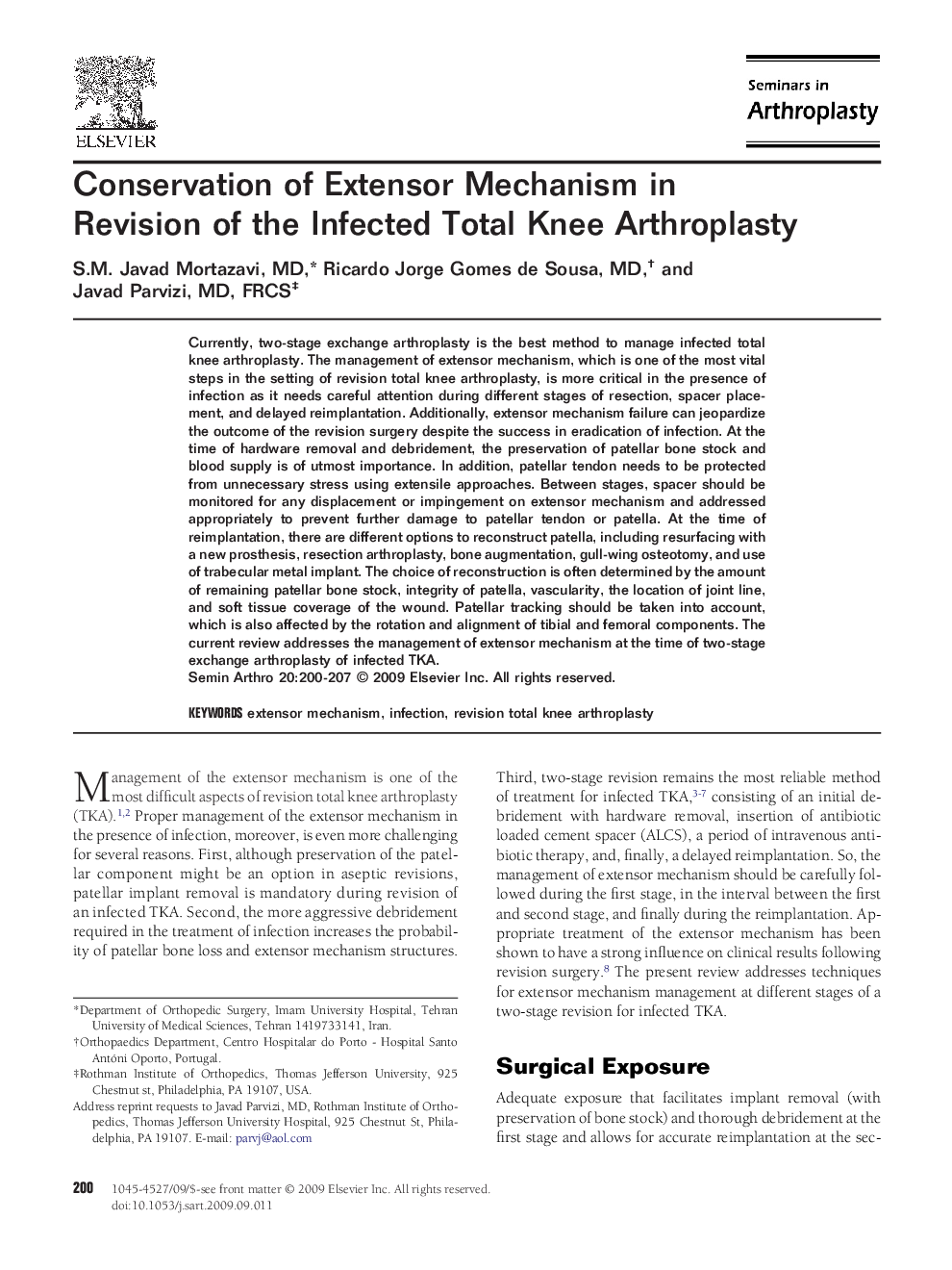| Article ID | Journal | Published Year | Pages | File Type |
|---|---|---|---|---|
| 4094225 | Seminars in Arthroplasty | 2009 | 8 Pages |
Currently, two-stage exchange arthroplasty is the best method to manage infected total knee arthroplasty. The management of extensor mechanism, which is one of the most vital steps in the setting of revision total knee arthroplasty, is more critical in the presence of infection as it needs careful attention during different stages of resection, spacer placement, and delayed reimplantation. Additionally, extensor mechanism failure can jeopardize the outcome of the revision surgery despite the success in eradication of infection. At the time of hardware removal and debridement, the preservation of patellar bone stock and blood supply is of utmost importance. In addition, patellar tendon needs to be protected from unnecessary stress using extensile approaches. Between stages, spacer should be monitored for any displacement or impingement on extensor mechanism and addressed appropriately to prevent further damage to patellar tendon or patella. At the time of reimplantation, there are different options to reconstruct patella, including resurfacing with a new prosthesis, resection arthroplasty, bone augmentation, gull-wing osteotomy, and use of trabecular metal implant. The choice of reconstruction is often determined by the amount of remaining patellar bone stock, integrity of patella, vascularity, the location of joint line, and soft tissue coverage of the wound. Patellar tracking should be taken into account, which is also affected by the rotation and alignment of tibial and femoral components. The current review addresses the management of extensor mechanism at the time of two-stage exchange arthroplasty of infected TKA.
